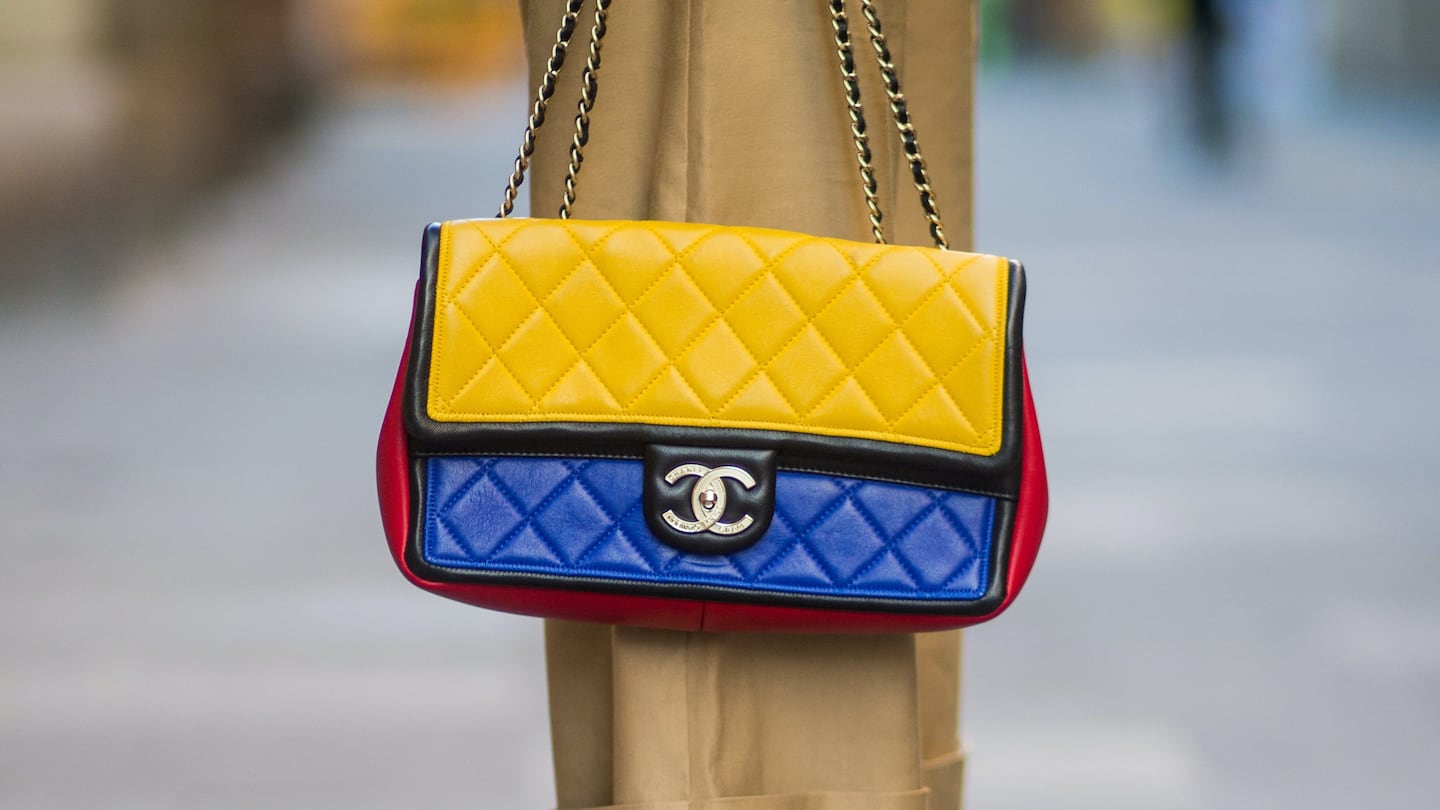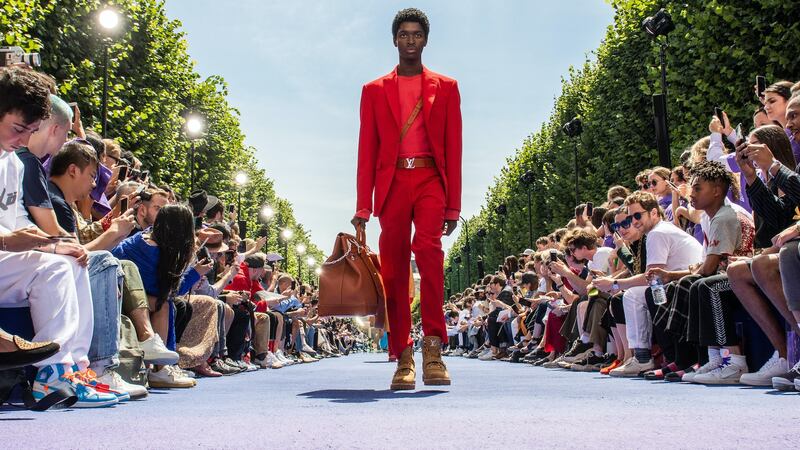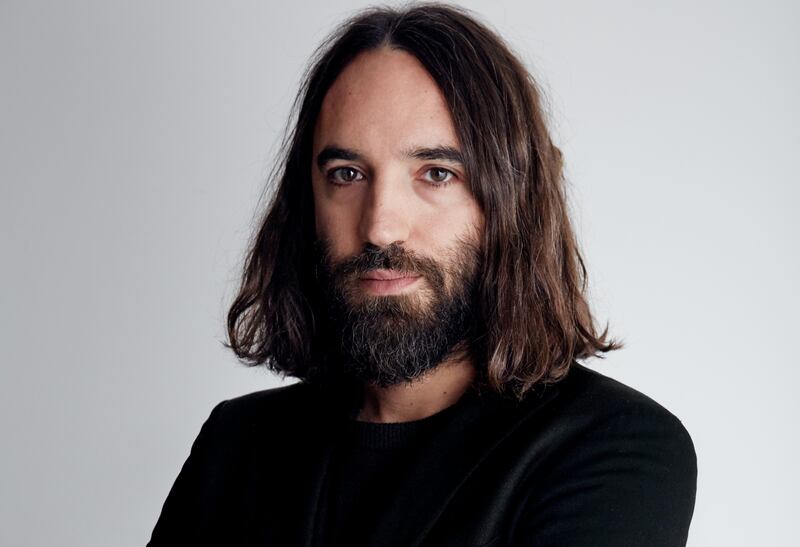
The Business of Fashion
Agenda-setting intelligence, analysis and advice for the global fashion community.

Agenda-setting intelligence, analysis and advice for the global fashion community.

Hello BoF Professionals, your exclusive 'This Week in Fashion' briefing is ready, with members-only analysis on the key topic of the week and a digest of the week's top news.
Last November, Chanel named The RealReal in a closely watched trademark infringement and counterfeiting lawsuit. In its biggest complaint, the French luxury giant accused the resale platform of selling fake Chanel handbags, claiming it had discovered at least seven counterfeit bags sold by the The RealReal and that its "authentication experts" could not be trusted.
“Only Chanel itself can know what is genuine Chanel,” claimed the brand. Meanwhile, The RealReal has rejected the allegations and filed a motion to dismiss the suit, calling it nothing more than an attempt to limit competition from a fast-growing secondary market that allows consumers to buy luxury goods at discounted prices.
This week, Chanel fired back, arguing that there was an inherent contradiction between The RealReal’s advertising claims to consumers that the products it sells are “100% the real thing” and its argument, filed in court papers, that its expert assessments were simply “a general expression of opinion” and therefore “immune from challenge.”
ADVERTISEMENT
If Chanel overcomes The RealReal’s motion to dismiss, the case will likely proceed to discovery. But Chanel’s discontent with the resale site may go deeper than fake bags.
Chanel, like many of the world’s top luxury mega-brands, is something of a paradox. It is highly exclusive and highly accessible at the same time, a recipe that drives billions of euros in revenue per year. Simply put, the brand is a master of perceived exclusivity, confining core products like its couture, ready-to-wear and handbags to high price ranges to conjure a halo of desirability over lower-priced product categories like fragrance, where it moves units by the millions.
The fact is that most luxury goods are not scarce.
But what happens when Chanel’s handbags are sold at discounted prices via resellers? To be sure, many of the high-end bags sold on resale sites are pre-owned and therefore can’t be expected to command their original price tags. But even brand-new Chanel bags, complete with tags, sell for less than their original retail prices on sites like The RealReal.
Some say that resellers support the luxury market by offering consumers more affordable entry points to high-end brands, thereby serving as a gateway for first-time luxury buyers and a valuable customer acquisition channel. Others add that a liquid secondary market for luxury goods allows sellers to reinvest resale earnings in new purchases. There is some truth to this.
But the secondary market remains problematic for a luxury sector that is all about perception. After all, what’s a customer to think when she sees new luxury bags — often positioned as so-called “investment pieces” said to hold intrinsic value — going for less than retail price?
The fact is that most luxury goods are not scarce. They are produced in large volumes and rely heavily on high prices and branding to generate the perception of exclusivity. But when the interplay between supply and demand on resale sites reveals these products to be more ubiquitous and less valuable than expected, the illusion starts to break down. (It doesn’t help that resellers are rarely as glamorous as luxury boutiques, further puncturing brand perception).
This week, The New York Times posed similar questions about what the rise of the resale market is doing to the famed Hermès Birkin bag. To be sure, neither Hermès nor Chanel seem to be suffering just yet. But if the desirability of core category items falls, it's could create problems further down the product pyramid, making even higher-margin, higher-volume goods, where luxury brands make significant revenue, less appealing.
Sure, lawsuits are one way to fight resellers. But the secondary market shows no sign of going away anytime soon. Quite the contrary. Powered by the internet, the luxury resale market has surged 9 percent per year since 2015, according to Bain, and many luxury brands are wondering what to do about it.
ADVERTISEMENT
They could launch their own resale sites or work directly with existing resale platforms to try and gain greater control over supply, price and presentation (not to mention expert authentication). That said, many luxury brands were slow to e-commerce and some, like Chanel, still don’t even sell core products online, let alone via third-party resale sites.
Luxury brands lean too heavily on price to maintain a perception of exclusivity.
Luxury brands could also learn a thing or two about the secondary market from sportswear giant Nike, which has a sophisticated approach to the multi-billion-dollar sneaker resale market, with indigenous specialist platforms like Stadium Goods and StockX, a ‘bid/ask’ marketplace that works like a stock market and has recently moved into luxury handbags.
While even brand-new luxury goods sold on resale sites typically change hands for less than their original retail price, chipping away at brand perception, Nike is a master in creating high-demand, limited-supply releases which generate extraordinary valuations on the secondary market, casting a positive halo over the company’s brand.
Nike sells a wide range of products across several tiers, from high volume general releases to ultra-premium limited releases. But the basic trick is being able to generate high levels of consumer excitement through clever marketing, accurately predict demand and then set supply at less than demand. This enables Nike to maximise retail sales, but ensure enough scarcity to keep desirability and resale prices up, turning the secondary market into a positive signal of brand value, not to mention a driver of retail sales from resellers looking to make a profit.
The strategy is built around Nike’s ability to deliver a constant stream of new products that keep fans coming back for release after release. The company launches new models continuously, often born from systematically remixing and reissuing core products.
But the bottom line is this: luxury brands lean too heavily on price to maintain a perception of exclusivity. Meanwhile, Nike uses a far more powerful lever: supply. “Everyone tries to impact demand, but you can’t control demand. You can control supply and you can control price, and supply is stronger than price,” explained Josh Luber, founder and chief executive of StockX. “[Luxury brands] need to create demand using other means than price.”
In a world where resale sites now display the true market value of products for millions to see, the evolving relationship between price and exclusivity at the core of the luxury strategy is likely to cause brands like Chanel more trouble than a few fake bags.
THE NEWS IN BRIEF
ADVERTISEMENT
FASHION, BUSINESS AND THE ECONOMY

Louis Vuitton Spring/Summer 2019 | Source: Peter White/Getty Images
Designer debuts pay off for LVMH in first quarter. The conglomerate reported a revenue rise of 16 percent to €12.5 billion ($14.10 billion), up 11 percent and beating analyst forecasts. Sales at LVMH's leather goods unit (largely driven by Louis Vuitton) rose 15 percent, beating the 11 to 12 percent expected. Shares were up 3.3 percent following the results. Meanwhile, as luxury brands experiment with ways to attract younger shoppers, Vuitton is increasingly betting on "pop-ups" in off-beat spots as a way to keep shoppers hooked, with plans to hold 100 temporary events in 2019, up from 80 last year.
Elizabeth and James leaves contemporary market behind for Kohl's. Once a $50 million business, Mary-Kate and Ashley Olsen's contemporary line closed its doors last year after an attempt to hew closer to The Row's style fell flat. The brand will now live on via a licensing deal with Kohl's. In September, the company laid off its design team, attributing the decision to poor sales. The production team stayed until the end of the year to fulfil orders and has since been let go as well.
Levi Strauss stock jumps as earnings growth impresses. The company gained 7 percent after its first earnings report as a public company and showed revenue growth near the high end of expectations, helped by Asia and categories outside main denim lines such as tops. Shares climbed above $23 a piece and stock has climbed 29 percent since last month's IPO. Levi's said revenue grew 7 percent compared with the year-ago period.
Fast Retailing cuts full-year outlook. Hurt by heavy discounts on winter clothes after a warm winter, the Uniqlo owner forecast an operating profit 10 billion yen ($90 million) below its previous estimate. It did, however, report an 11 billion yen ($99 million) rise in operating profit beating analyst expectations. Operating profit for Uniqlo's China business has been growing by double digits in recent quarters; the company expanded to 633 locations in China, up 78 stores from a year earlier.
Debenhams set for administration after rejecting new Ashley plan. The British department store has been battling for survival after a consumer shift online destroyed 90 percent of its share value in the past year. Fighting to defend his 30 percent stake, Sports Direct boss Mike Ashley made a midnight offer to underwrite £200 million in exchange for him becoming chief executive. Debenhams rejected the offer, having previously turned down Ashley's £150 million rescue plan.
Macy's is putting new stores inside its stores. One year ago, the department store chain bought Story, a New York retail store that curates merchandise around a theme or set of ideas. Macy's has announced that it's adding 1,500 square-foot Story shops to 36 of its stores across the country as part of a grander scheme to divvy up its real estate and fill excess space. Macy's hopes the new spaces, which will rotate inventory every two months with different local brands, will encourage shoppers to keep coming back.
Roberto Cavalli gets creditor protection from court. A Milan court has granted the troubled Italian fashion house up to 120 days to present a turnaround plan. Private equity firm Clessidra has been trying to sell its 90 percent stake in Cavalli for months following a string of losses in recent years. Cavalli asked for Chapter 11-like protection at the end of March to keep the business running while it finds a new investor.
THE BUSINESS OF BEAUTY

Michelle Pfeiffer's Henry Rose collection of fragrances | Source: Courtesy
Michelle Pfeiffer takes on the perfume industry. The American actress and producer joined Instagram less than three months ago, but has already accrued a large, highly engaged following, as she introduces her first fragrance line — a range of five scents made with "clean" ingredients. Pfeiffer said she began thinking about the idea of creating a clean fragrance about nine years ago, but cosmetic companies were more interested in her famous name than her ideas.
Foreo considers sale at over $1 billion. The six-year-old Swedish beauty company, known for its electric facial cleansers and toothbrushes, is working with advisers on a potential sale. Although plans are at an early stage and the company may still change its mind, Foreo could fetch more than $1 billion. The company's best-selling products include the Luna line of skin cleaners and egg-shaped brushes that exfoliate and massage the face, and retail for between $150 and $230.
PEOPLE

Ferdinando Verderi | Source: Courtesy
Vogue Italia names creative director. Following the departure of Giovanni Bianco late last month, Vogue Italia has announced Ferdinando Verderi its new creative director. Verderi, a founding member of advertising agency Johannes Leonardo, most recently worked with Donatella Versace on repositioning the Versace brand. His first issue for Vogue Italia will launch in July 2019.
Elle UK names editor-in-chief. Hearst UK has appointed Cosmopolitan editor-in-chief Farrah Storr as editor-in-chief of Elle UK, with immediate effect. Storr replaces Anne-Marie Curtis, who stepped down after two years at the helm of the publication. She reports to Elle managing director Jacqui Cave, with a dotted reporting line to Betsy Fast, executive director of digital editorial strategy.
Reebok denies rumours that Beyoncé walked out of meeting over lack of diversity. Following the announcement that the singer will partner with Adidas to relaunch her athletic brand, Ivy Park, rumours emerged that Beyoncé walked out of a meeting with Reebok due to a lack of diversity. Reebok has vehemently denied the claims, stating that discussions with Beyoncé and her team continued for several months after the initial meeting.
Zalando reappoints former board chair. Europe's biggest online only fashion retailer has appointed Cristina Stenbeck, the owner of its major shareholder Kinnevik, as the new chairperson of its supervisory board. Stenbeck previously chaired the Zalando board from 2014 to 2016, when she was replaced by Lothar Lanz, former finance chief of German media firm Axel Springer. Outgoing chief marketing at Netflix Kelly Bennett has also been nominated to join by the supervisory board.
MEDIA AND TECHNOLOGY
Pinterest seeks up to $1.28 billion in IPO. In its last private funding round in 2017, the digital scrapbook raised $150 million for a total valuation of about $12.3 billion. Pinterest is now seeking to raise as much as $1.28 billion in an IPO that could value the company at only $9 billion. The company also revealed about $756 million in revenue from online advertisements in 2018, a 60 percent growth rate that accelerated from the year prior.
Asos sticks to full-year guidance despite profit plunge. The British online fashion retailer reported an 87 percent drop in first-half pretax profit, hurt by poor trading in the run-up to Christmas and logistical hiccups as it entered the US market. But, the company stuck to its guidance for sales, profit margins and capital expenditure for the full year. Shares traded up 5 percent and pretax profit came in at £4 million ($5.2 million) on sales up 14 percent to £1.31 billion, in line with analyst estimates.
Klarna chief executive discusses possible future IPO. The Swedish tech unicorn is nearing the point of seeking a stock market listing but it is unlikely to be this year, the company's chief executive and co-founder said. The online payment services firm was valued at more than $2 billion when H&M bought a stake in it last year, and grew revenues by 31 percent to 5.45 billion krona ($588 million) in 2018.
JD.com prepares deep job cuts. The Chinese e-commerce giant is preparing deep cuts to its workforce and rescinding some job offers, as it hopes to revive dwindling morale and rein in losses. An internal email to managers stated plans to reduce headcount across the company, cutting some teams by as much as half. The threat of firings has walloped morale and prompted many to explore employment elsewhere.
BoF Professional is your competitive advantage in a fast-changing fashion industry. Missed some BoF Professional exclusive features? Click here to browse the archive.
From analysis of the global fashion and beauty industries to career and personal advice, BoF’s founder and CEO, Imran Amed, will be answering your questions on Sunday, February 18, 2024 during London Fashion Week.
The State of Fashion 2024 breaks down the 10 themes that will define the industry in the year ahead.
Imran Amed reviews the most important fashion stories of the year and shares his predictions on what this means for the industry in 2024.
After three days of inspiring talks, guests closed out BoF’s gathering for big thinkers with a black tie gala followed by an intimate performance from Rita Ora — guest starring Billy Porter.